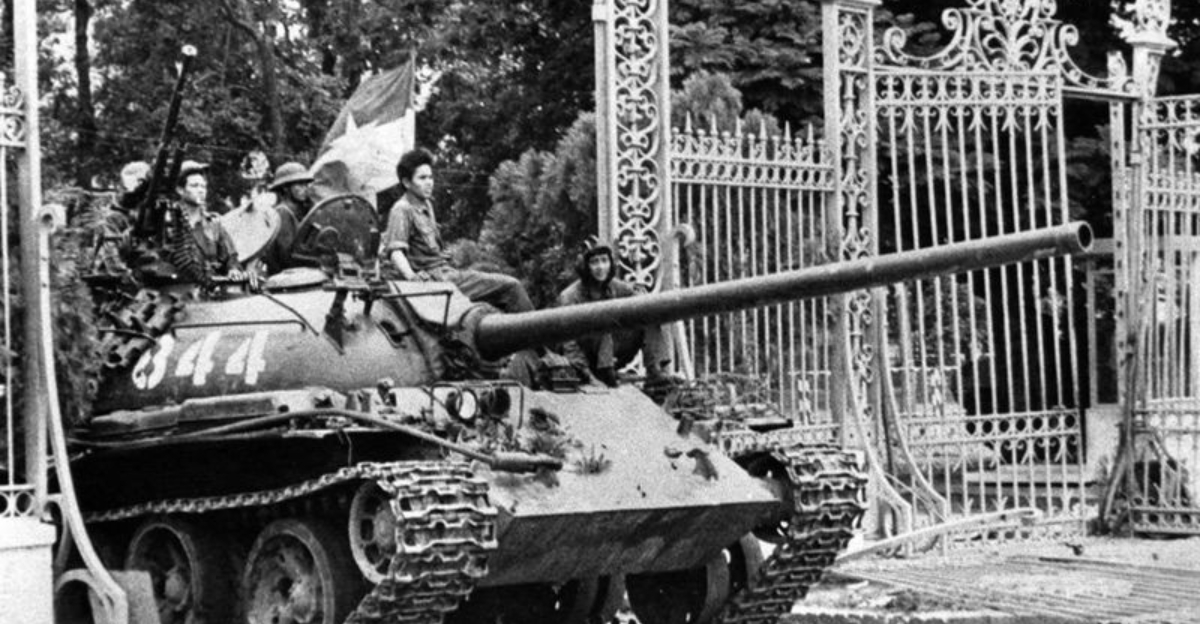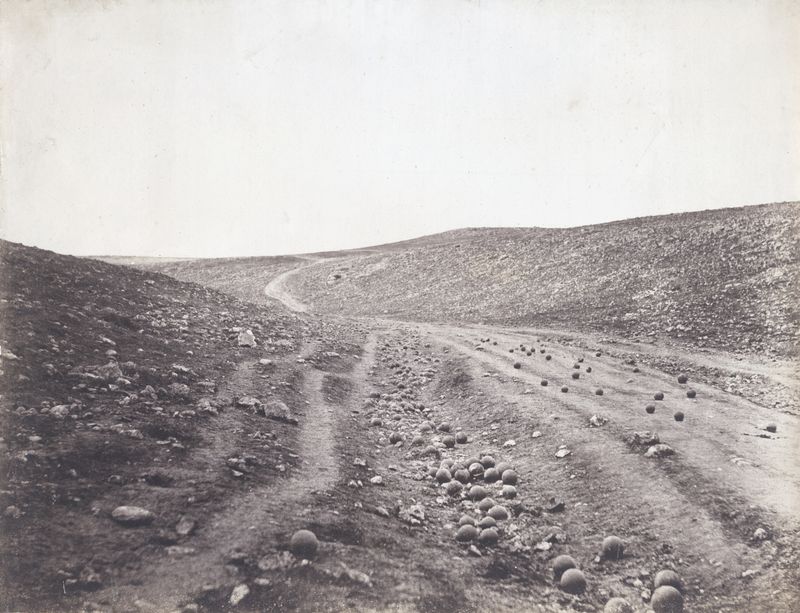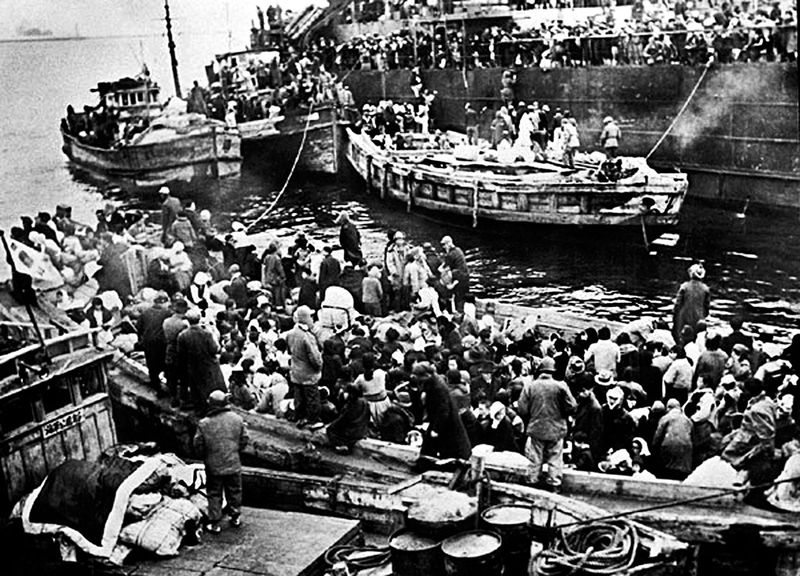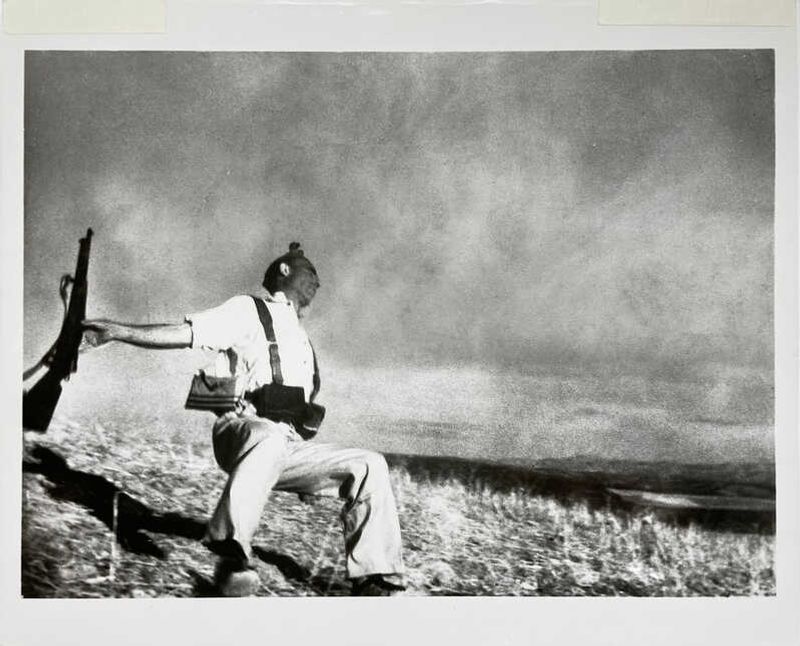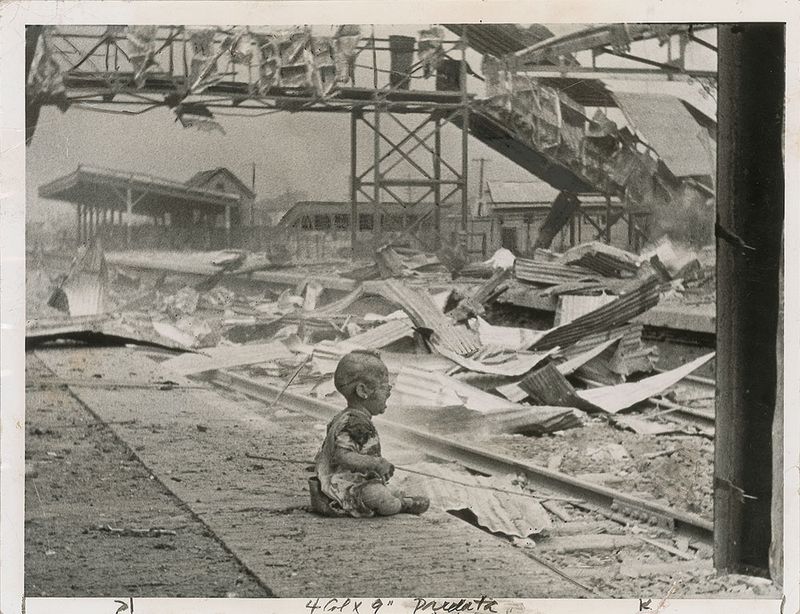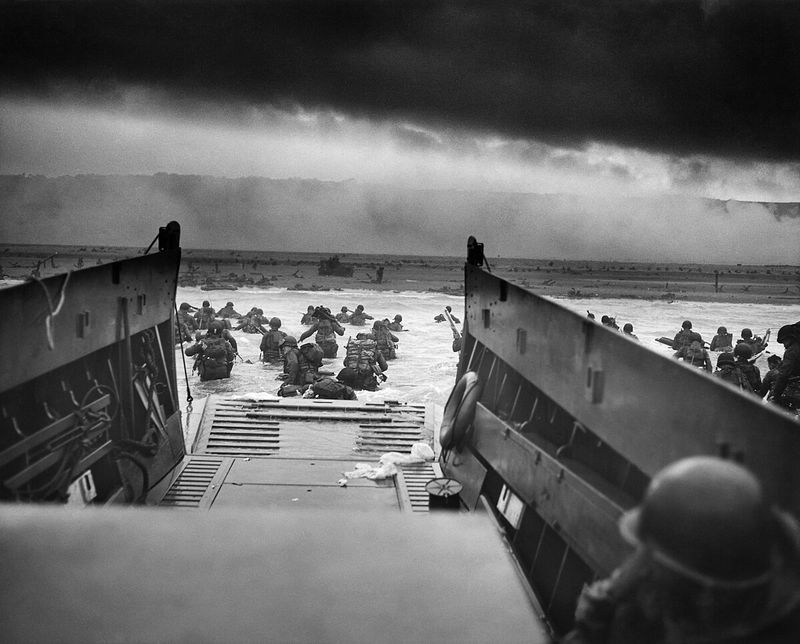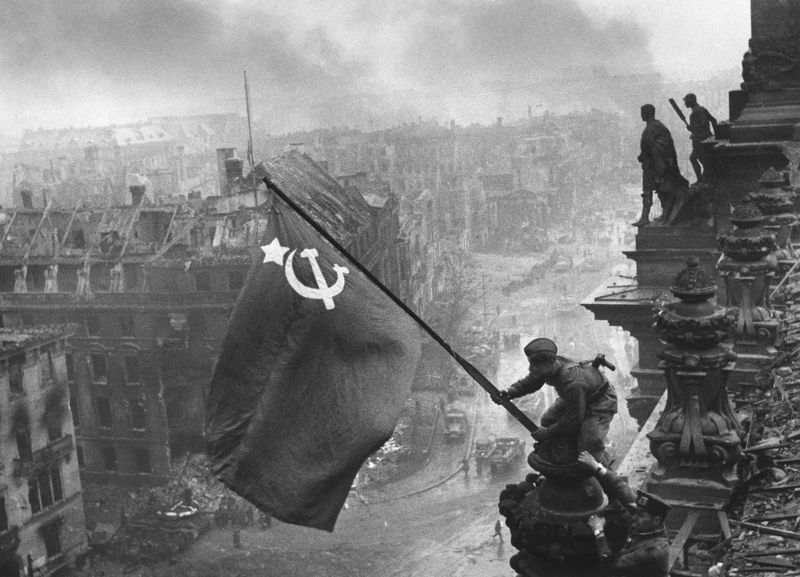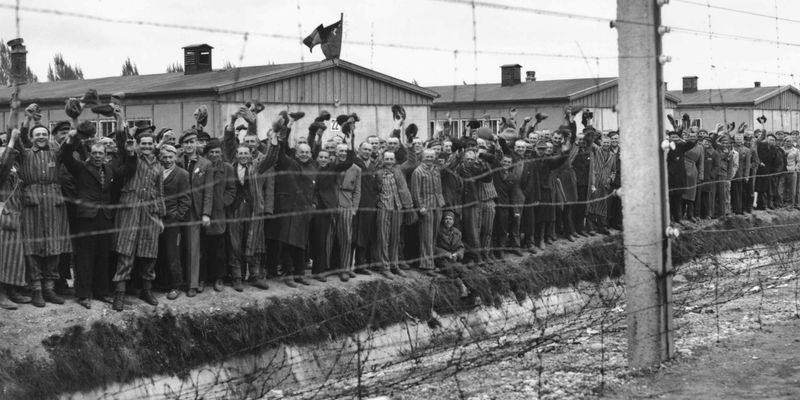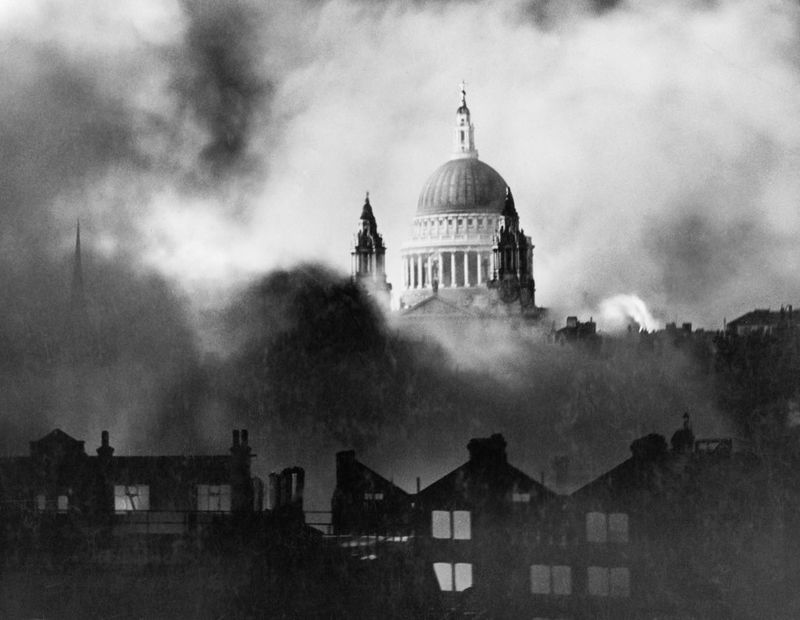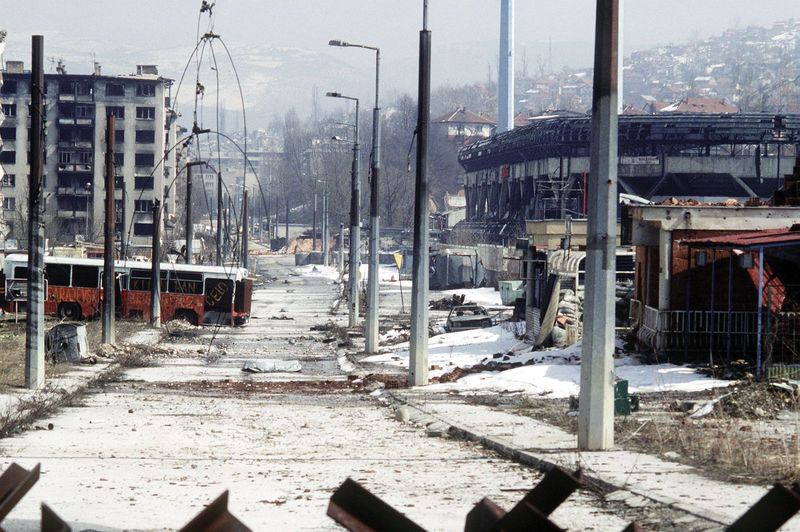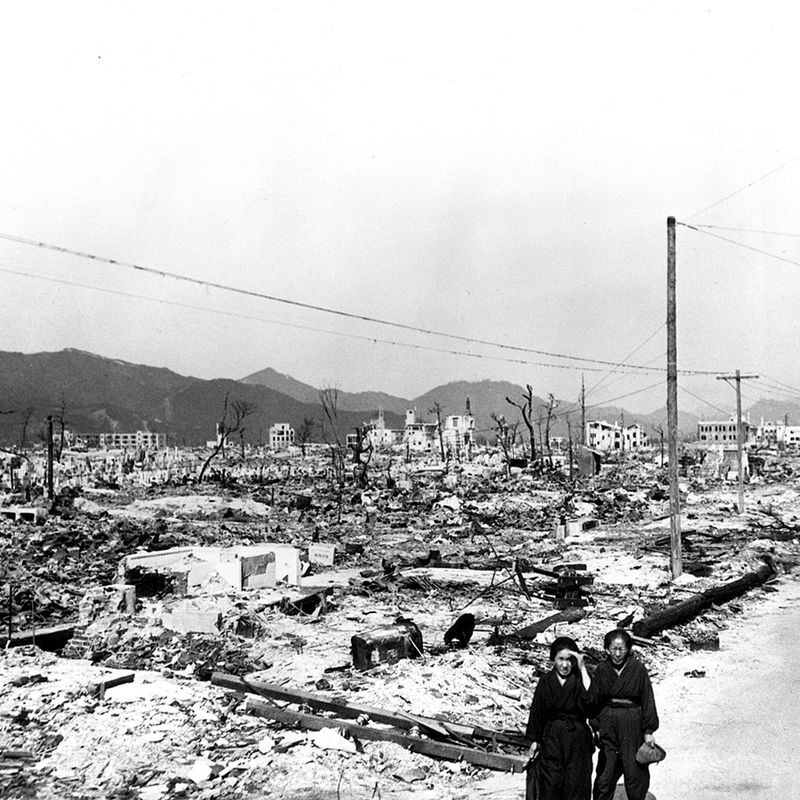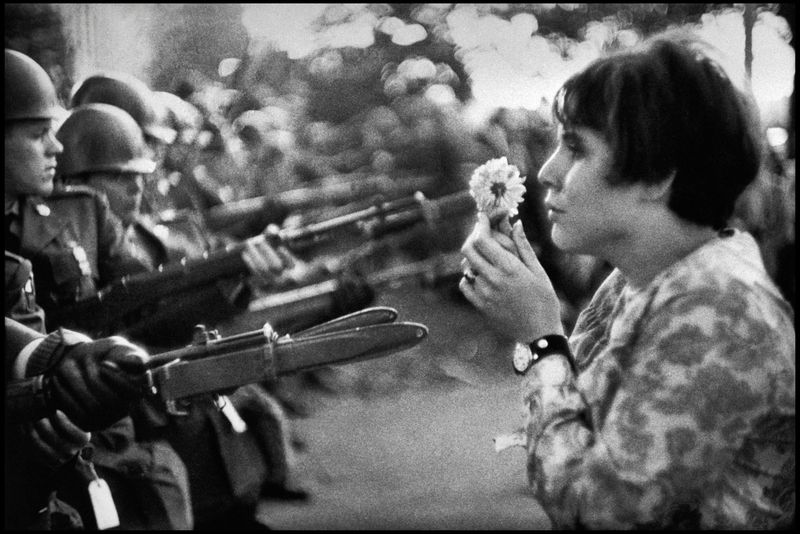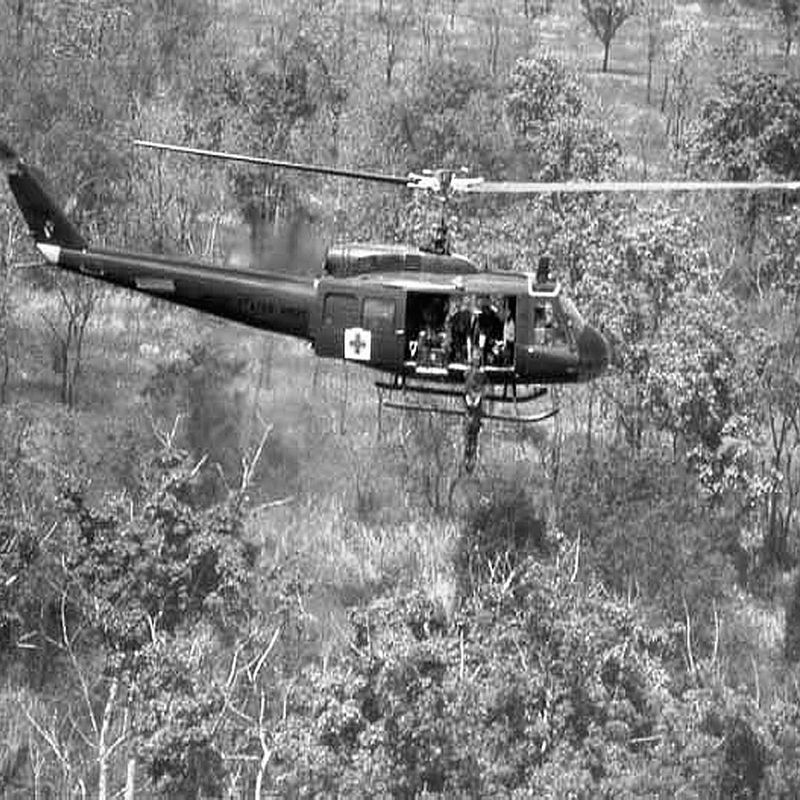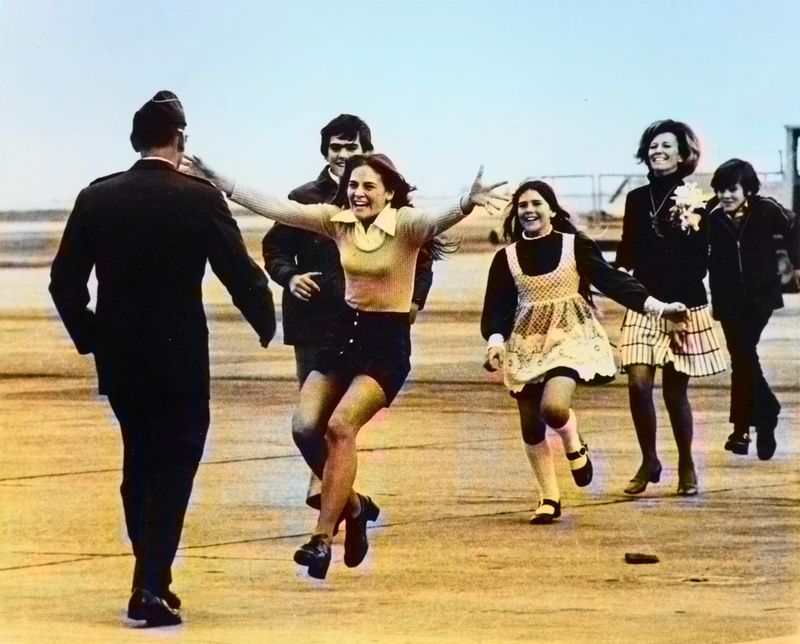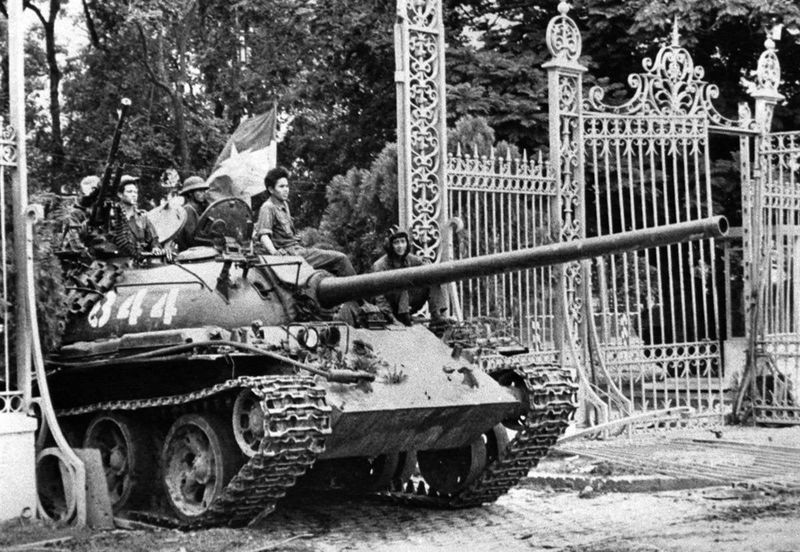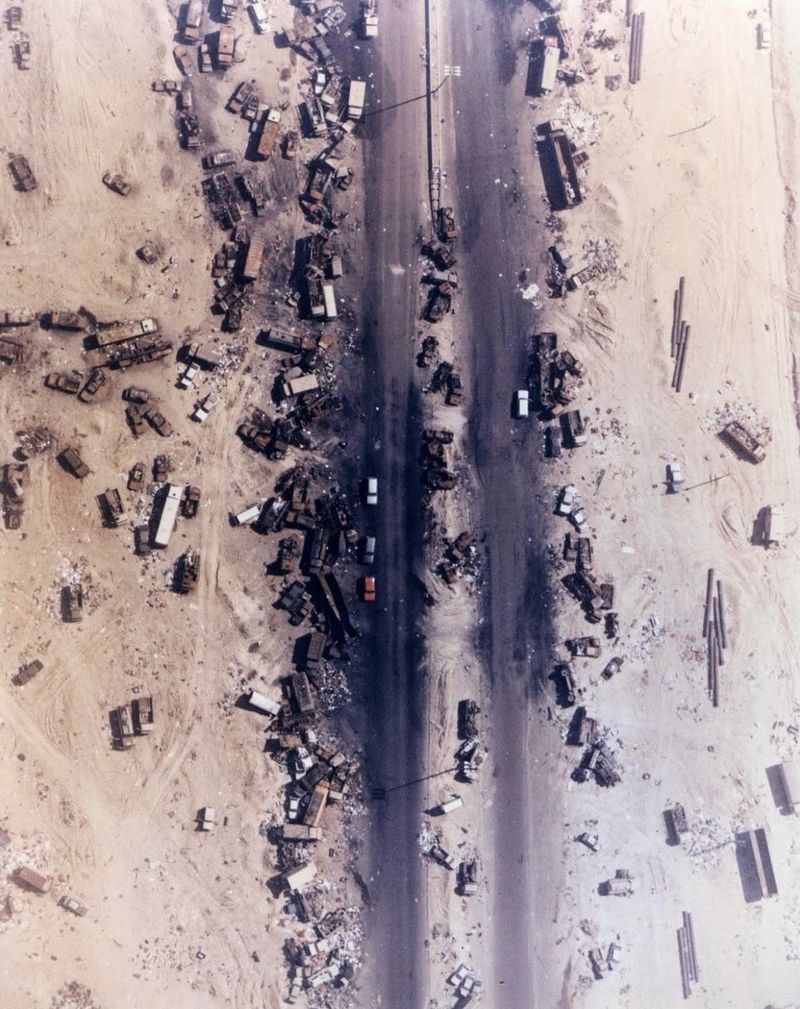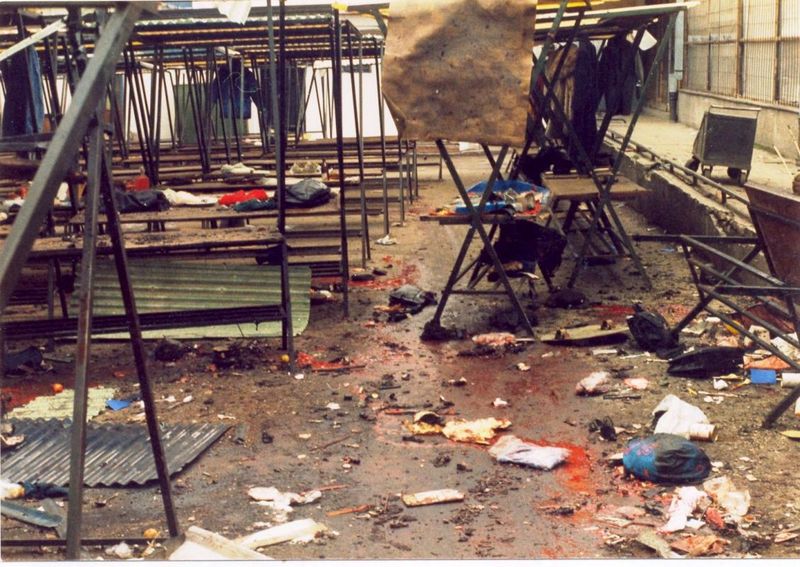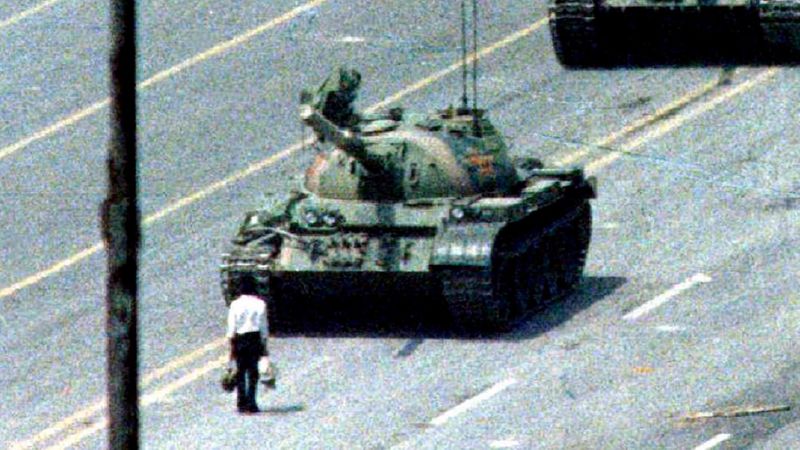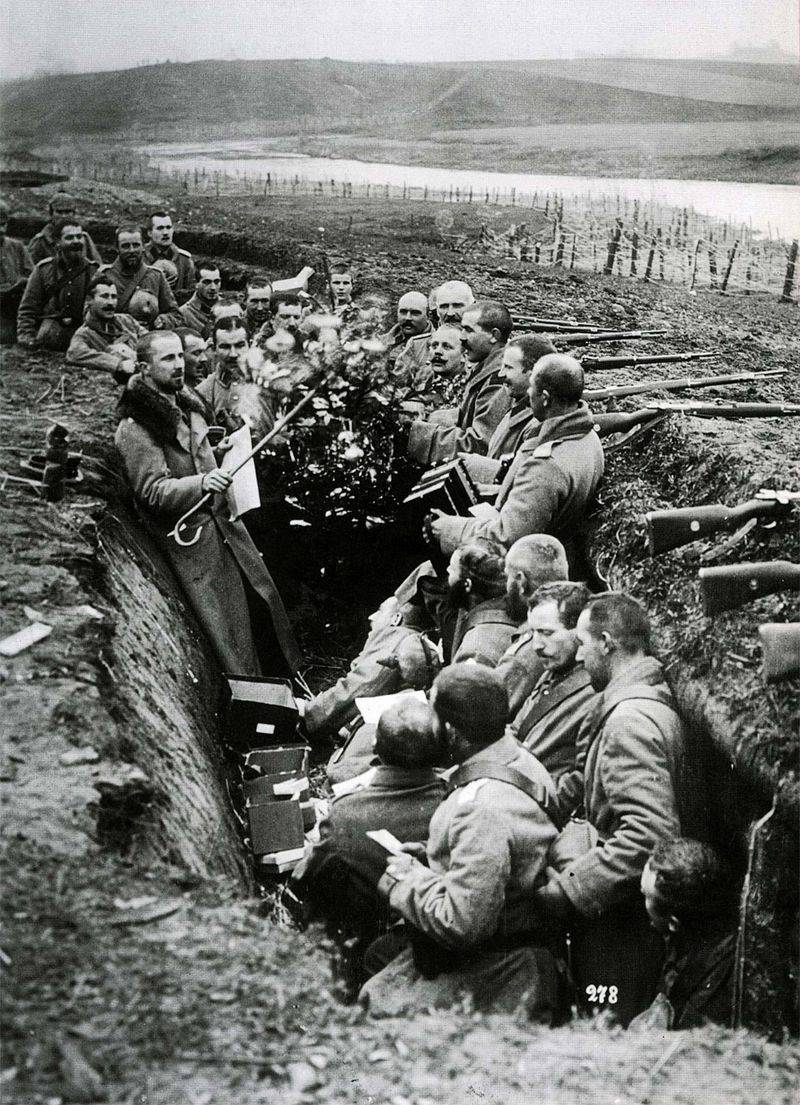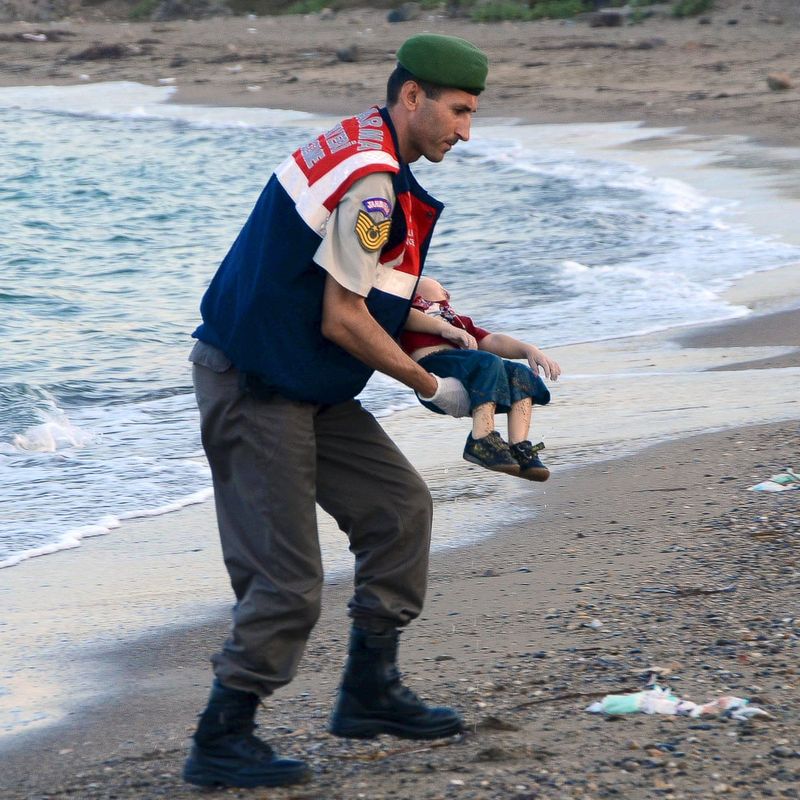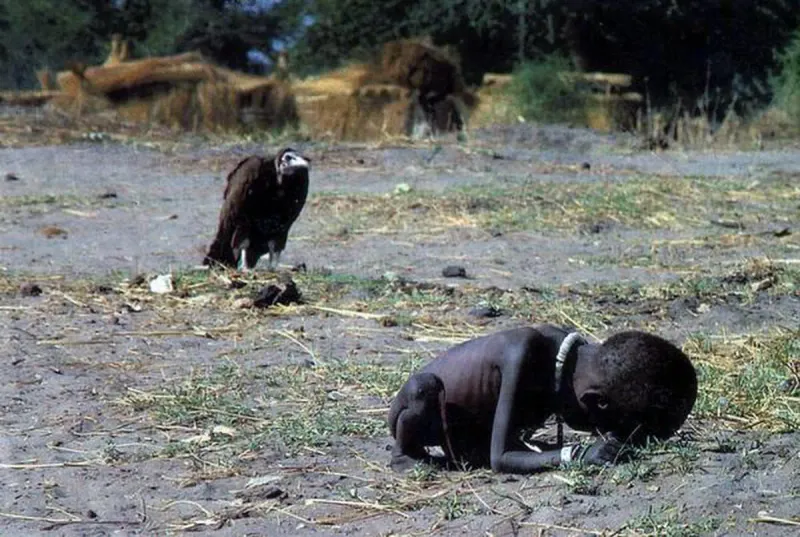This blog post explores 30 historical photographs that encapsulate the multifaceted nature of wars. These images reveal the bravery, despair, and devastation that wars have brought upon humanity, transcending time and geography.
1. Valley of the Shadow of Death
Captured by Roger Fenton, this haunting image from the Crimean War tells the stark reality of 19th-century warfare. Cannonballs are strewn across a desolate road, a silent testament to the chaos and desolation experienced during the conflict. The absence of human presence adds an eerie calmness to the otherwise grim scene.
Fenton, one of the first war photographers, risked his safety to document the brutalities of war. His work provides a window into moments that words alone cannot convey. This photograph stands as a symbol of the relentless and unforgiving nature of war.
2. Korean War Evacuation at Hungnam
During the Korean War, the evacuation at Hungnam in December 1950 was a massive operation involving UN forces and Korean civilians. Faced with harsh winter conditions, over 100,000 troops and countless refugees were evacuated by sea.
The image portrays the desperation and hope of those fleeing conflict, set against the backdrop of a chaotic harbor. This operation, known as “Christmas Cargo,” symbolized unity amidst adversity.
The successful evacuation demonstrated logistical prowess and humanity, offering a glimmer of hope during a bleak period. It serves as a testament to collaboration in the face of dire circumstances.
3. Battle of the Somme trenches photo
World War I’s Battle of the Somme was marked by grueling trench warfare. This image captures soldiers huddled in waterlogged trenches, surrounded by debris and the ever-present threat of enemy attack. The oppressive conditions highlight the unyielding nature of the conflict.
The Somme offensive, one of the war’s deadliest battles, serves as a poignant reminder of the human cost of war. The photograph’s grim depiction of life in the trenches underscores the relentless and unforgiving environment soldiers faced daily. It encapsulates the endurance and resilience required to survive such harrowing circumstances.
4. Bombing of Dresden
The bombing of Dresden in February 1945 remains a controversial chapter in World War II history. Known for its cultural significance, Dresden was transformed into a landscape of devastation within hours. The attack raised ethical questions about warfare and civilian casualties.
The photograph captures the inferno that consumed the city, reflecting the war’s indiscriminate nature. The sight of burning buildings and rising smoke serves as a haunting reminder of war’s darker side.
This event highlighted the fine line between military necessity and humanitarian concerns, sparking debates that continue to this day.
5. The Falling Soldier
Robert Capa’s iconic photograph captures a Spanish Republican militiaman at the precise moment of being shot, mid-fall. This split-second image from the Spanish Civil War conveys the immediacy and chaos of battle. The soldier’s outstretched arms and the barren landscape behind him create a striking visual impact.
Capa’s work is celebrated for its raw and unfiltered depiction of warfare. His ability to capture such fleeting moments offers a glimpse into the harsh realities faced by those on the frontlines. This photograph stands as a powerful symbol of the sacrifices made in the name of freedom.
6. Bloody Saturday (Shanghai, 1937)
H.S. Wong’s photograph, known as “Bloody Saturday,” captures the aftermath of a Japanese bombing in Shanghai in 1937. Among the rubble and destruction, a crying infant sits alone on blood-soaked tracks, embodying the innocence lost amid the chaos of war.
This haunting image highlights the civilian suffering during the Sino-Japanese War. Wong’s photograph became a symbol of the conflict’s devastating impact on non-combatants, drawing international attention to the atrocities committed. The image’s enduring legacy serves as a reminder of the indiscriminate nature of warfare and its toll on humanity.
7. Into the Jaws of Death (Omaha Beach)
Robert F. Sargent’s iconic D-Day photograph, “Into the Jaws of Death,” depicts U.S. troops disembarking from landing crafts onto Omaha Beach under intense enemy fire. The image encapsulates the bravery and determination of soldiers during one of World War II’s most significant operations.
The chaotic scene, with soldiers wading through the surf, illustrates the formidable challenges they faced. This photograph has become synonymous with the heroism displayed on D-Day, a pivotal moment in the Allied victory. The raw emotion captured in this image continues to resonate as a symbol of courage and sacrifice.
8. Raising the Flag on Iwo Jima
Joe Rosenthal’s Pulitzer-winning photograph of six U.S. Marines raising the flag on Iwo Jima’s Mount Suribachi is an enduring symbol of American valor. Captured during a critical World War II battle, the image represents hope and triumph amid the trials of war.
The photograph’s dynamic composition, with Marines working in unison, underscores the collective effort required for victory. This iconic image has become a powerful emblem of national pride, embodying the spirit of resilience and unity. It continues to inspire generations, reminding us of the sacrifices made for freedom.
9. Raising a Flag over the Reichstag
Yevgeny Khaldei’s photograph captures the moment a Soviet soldier plants the USSR flag atop Berlin’s Reichstag, marking the defeat of Nazi Germany. This dramatic image symbolizes the culmination of years of conflict and the beginning of a new era in Europe.
The photograph’s powerful composition, with the flag billowing in the wind, conveys the triumph and determination of the Soviet forces. Khaldei’s work has become a definitive representation of victory in World War II, illustrating the monumental impact of the Allied efforts. It remains an iconic testament to the war’s conclusion.
10. Liberation of Dachau Survivors
The liberation of Dachau concentration camp by U.S. troops revealed the horrific realities of the Holocaust. This photograph captures emaciated survivors celebrating their newfound freedom, their expressions a blend of relief and disbelief.
The image serves as a powerful reminder of the atrocities committed during World War II and the resilience of those who endured unimaginable suffering. The joy and hope reflected in the survivors’ faces stand in stark contrast to their gaunt appearances, symbolizing the triumph of the human spirit over oppression. This photograph remains an enduring testament to liberation and justice.
11. St Paul’s Survives
Herbert Mason’s iconic photograph of St Paul’s Cathedral amidst the London Blitz captures a moment of resilience and hope. Surrounded by smoke and destruction, the cathedral stands defiantly against the backdrop of a burning city.
This image became a symbol of British endurance during World War II, representing the indomitable spirit of Londoners in the face of adversity. The contrast between the cathedral’s steadfast presence and the chaos around it epitomizes the struggle to preserve civilization amid the ravages of war. It remains an enduring icon of courage and perseverance.
12. Fireman Carries Boy Out of the Rubble
George Greenwell’s photograph captures a poignant moment during the London Blitz: a firefighter gently carrying a young boy from the rubble of a bombed building. This image highlights the selflessness and bravery of those who risked their lives to save others amid wartime chaos.
The tender scene contrasts sharply with the surrounding devastation, emphasizing the resilience and humanity that can emerge in times of crisis. This photograph has become an emblem of hope and compassion, illustrating the power of individual acts of courage to inspire and uplift communities during the darkest hours.
13. Delivery After Raid (The London Milkman)
Fred Morley’s photograph, known as “The London Milkman,” showcases an everyday hero making milk deliveries through bomb-damaged streets during the London Blitz. The image highlights the resilience and determination to maintain normalcy amid chaos.
The milkman’s calm demeanor against the backdrop of destruction serves as a testament to the unwavering spirit of civilians during wartime. His perseverance in the face of adversity symbolizes the courage required to carry on with daily life under threat. This photograph captures the essence of British tenacity and resolve during World War II.
14. The Siege of Sarajevo
The Siege of Sarajevo, lasting from 1992 to 1996, was one of the longest sieges in modern warfare. The Bosnian capital became a battleground, with residents facing constant sniper fire and artillery attacks. The city’s infrastructure was decimated, leaving civilians to navigate a perilous environment just to secure basic necessities.
Amidst the destruction, the resilience and ingenuity of Sarajevo’s citizens shone through. Makeshift theatres, schools, and markets emerged, demonstrating the persistence of culture and community even in dire circumstances.
The siege highlighted the devastating impact of ethnic conflict and the international community’s struggle to intervene effectively, leaving a lasting legacy on the region and its people.
15. Napalm Girl (Terror of War)
Nick Ut’s Pulitzer-winning photograph, “Napalm Girl,” captures the harrowing moment 9-year-old Phan Thi Kim Phuc runs naked down a road, screaming in pain after a napalm attack during the Vietnam War. The image starkly exposes the civilian suffering and brutality of the conflict.
This powerful visual became a catalyst for anti-war sentiment worldwide, highlighting the indiscriminate nature of warfare. Kim Phuc’s anguish and vulnerability resonated globally, sparking conversations about the impact of war on innocent lives. The photograph remains an enduring symbol of the horrors of war and the urgent need for peace.
16. The Aftermath of Hiroshima
In 1945, the city of Hiroshima faced unprecedented devastation. The atomic bomb, dropped by the United States, obliterated the city in an instant, reducing buildings to rubble and claiming thousands of lives in its wake. The landscape turned into a charred wasteland, epitomizing the destructive power unleashed during World War II.
Survivors grappled with the immediate aftermath, searching for loved ones amidst the ruins. The haunting image of Hiroshima serves as a stark reminder of the consequences of nuclear warfare, evoking a sense of loss and reflection.
Despite the tragedy, stories of resilience emerged, as people began the arduous process of rebuilding, symbolizing hope amid despair. This event marked a pivotal moment in history, changing perspectives on warfare forever.
17. Jan Rose Kasmir at Pentagon Protest
Marc Riboud’s photograph of Jan Rose Kasmir at the 1967 Pentagon protest captures a moment of peaceful defiance. Kasmir, a young anti-Vietnam War protester, stands serenely as she confronts armed National Guardsmen, embodying the power of nonviolent resistance.
The image’s contrasting elements, with Kasmir’s calm demeanor set against the guards’ imposing presence, highlight the courage and conviction of those who stood against the war. This photograph has become an enduring symbol of the peace movement, illustrating the impact of individual actions in challenging injustice and advocating for change.
18. Medevac in the A Shau Valley
Art Greenspon’s photograph depicts a U.S. medevac helicopter arriving in the dense jungles of Vietnam’s A Shau Valley to evacuate wounded paratroopers. The image captures the urgency and danger faced by medics and soldiers in the midst of war.
The helicopter’s descent amidst the lush, treacherous terrain symbolizes the challenges of providing aid under fire. This photograph highlights the dedication and bravery of those involved in life-saving missions, showcasing their commitment to preserving life amid chaos. It stands as a tribute to the selflessness and heroism observed during the Vietnam War.
19. Returning POW Homecoming
Sal Veder’s heartwarming photograph captures the emotional homecoming of Lt. Col. Robert Stirm as he reunites with his family at Travis Air Force Base after nearly six years as a prisoner of war in Vietnam. The image conveys the joy and relief felt at that moment.
The photograph’s emotional depth highlights the personal sacrifices and challenges faced by soldiers and their families. It stands as a testament to the resilience and strength of the human spirit in overcoming adversity. This touching reunion symbolizes hope and healing after the trials of war.
20. Fall of Saigon Tank Breaks Palace Gates
The fall of Saigon on April 30, 1975, marked the end of the Vietnam War. An Associated Press photograph captures a North Vietnamese tank crashing through the gates of the Presidential Palace, symbolizing the collapse of South Vietnam.
This dramatic image illustrates the sweeping changes brought about by the conflict’s conclusion. The tank’s imposing presence against the backdrop of the palace signifies the power shift and the dawn of a new era. This photograph remains a powerful reminder of the war’s impact on Vietnam and its enduring legacy.
21. Highway of Death
During the Gulf War, Kuwait’s Highway 80 became known as the “Highway of Death.” Aerial photographs show the aftermath of coalition bombing, with destroyed Iraqi convoys scattered along the road. This haunting image highlights the devastating consequences of modern warfare.
The scene’s stark desolation and the charred remains of vehicles symbolize the ruthless efficiency of aerial bombardment. The photograph serves as a reminder of the profound destruction wrought by war, emphasizing the need for diplomacy and peace. It remains a sobering testament to the Gulf War’s impact on the region.
22. Afghan Girl
Steve McCurry’s iconic portrait of Sharbat Gula, known as the “Afghan Girl,” was taken in a refugee camp during the Soviet-Afghan War. Her piercing green eyes, framed by a red headscarf, captivated the world and became a symbol of the plight of Afghan refugees.
The photograph’s striking composition and Gula’s intense gaze convey the resilience and strength of those displaced by conflict. This image brought global attention to the humanitarian crisis in Afghanistan, highlighting the enduring impact of war on individuals. It remains one of the most recognizable photographs in history.
23. Markale Market Shelling
During the Bosnian War, the shelling of Sarajevo’s Markale market in February 1994 left a devastating impact. Photographs capture the aftermath, with civilians amidst debris and destruction, highlighting the war’s toll on innocent lives.
The image reflects the indiscriminate violence experienced by those living in conflict zones. The tragedy at Markale drew international condemnation and underscored the need for intervention and peace. This photograph serves as a poignant reminder of the suffering endured by civilians during wartime and the urgency of addressing humanitarian crises.
24. Mushroom Cloud Over Nagasaki
The detonation of the atomic bomb, Fat Man, over Nagasaki in 1945 marked a pivotal moment in history. Photographs capturing the massive mushroom cloud rising into the sky symbolize the dawn of the nuclear age and its devastating potential.
The image’s dramatic scale and ominous presence convey the unprecedented destructive power unleashed upon the city. This photograph serves as a somber reminder of the consequences of nuclear warfare, emphasizing the urgent need for disarmament and peace. It remains an enduring symbol of the perilous balance between technological advancement and humanity’s survival.
25. V-J Day in Times Square
Alfred Eisenstaedt’s spontaneous photograph captures the exuberance of V-J Day in Times Square, as a sailor passionately kisses a nurse amid celebrations marking Japan’s surrender. This iconic image embodies the relief and joy felt at the end of World War II.
The photograph’s lively and candid nature reflects the collective euphoria and hope for a peaceful future. It has come to symbolize the broader sense of liberation and happiness experienced globally at the war’s end. This timeless moment continues to inspire as a testament to the enduring spirit of celebration and unity.
26. Tank Man
Jeff Widener’s photograph of “Tank Man” during the 1989 Tiananmen Square protests captures a moment of extraordinary courage. A lone protester stands defiantly in front of a line of tanks, embodying the power of individual resistance against oppression.
The image’s stark simplicity and the protester’s unwavering stance highlight the human spirit’s resilience and determination in the face of tyranny. This photograph has become an enduring symbol of the fight for democracy and human rights, inspiring countless individuals worldwide to stand up for justice.
27. The Christmas Truce of 1914
During the brutal conflict of World War I, a moment of unexpected humanity occurred on Christmas Eve 1914. Soldiers from opposing sides laid down their arms, venturing into no man’s land to share a fleeting peace. They exchanged gifts, sang carols, and even played football, capturing a rare sense of camaraderie amidst the chaos of war.
This spontaneous truce, not sanctioned by higher commands, reflected the shared humanity of those entrenched in the fight. It was a poignant reminder that even in times of conflict, the spirit of goodwill can prevail.
Though brief, this truce left an indelible mark on those who participated, highlighting the potential for peace and understanding even in the darkest of times.
28. Alan Kurdi
Nilüfer Demir’s poignant photograph of Alan Kurdi, a drowned Syrian boy on a Turkish beach, galvanized global awareness of the refugee crisis in 2015. The image highlights the tragic consequences of the Syrian Civil War and the perilous journeys undertaken by those fleeing conflict.
Kurdi’s small, lifeless body lying face down in the sand evokes a deep sense of loss and urgency for humanitarian intervention. This photograph became a symbol of the suffering endured by refugees, sparking international conversations about the need for compassion and assistance.
29. Starving Child and Vulture
Kevin Carter’s Pulitzer-winning photograph depicts a stark scene from the 1993 Sudanese famine: an emaciated child collapsed on the ground while a vulture lurks nearby. This haunting image highlights the dire consequences of war-induced famine.
The photograph’s bleak composition and the vulture’s ominous presence emphasize the urgency of addressing humanitarian crises. Carter’s work brought international attention to the famine’s devastating impact, sparking conversations about the responsibilities of the global community. This image remains a powerful reminder of the need for action and compassion in the face of human suffering.
30. The Battle of Stalingrad
The Battle of Stalingrad stands as one of the most grueling engagements of World War II. Lasting from 1942 to 1943, this battle became a turning point in the war, characterized by bitter urban combat and immense human suffering. Soviet and Axis forces clashed in a ruined cityscape, fighting street by street, building by building.
The harsh winter added to the soldiers’ woes, with frostbite and starvation becoming as formidable enemies as the opposing army. The brutality witnessed and the resilience displayed during this battle underscore the extreme toll of war on both soldiers and civilians.
Ultimately, the Soviet victory at Stalingrad marked a significant shift in the war’s momentum, bolstering Allied morale and signaling the beginning of the Axis decline.
